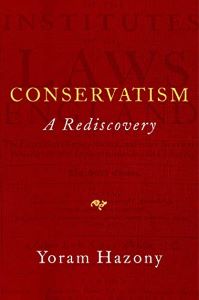Last week Canadian Prime Minister Justin Trudeau made a surprise trip to Ukraine during which he announced a large (in Canadian terms) aid package for that beleaguered nation. The decision to assist Ukraine in its fight against Russian aggression continues to enjoy widespread support in Canada, but would Canadians continue that support if they knew the details?
The federal government has pegged the cost of assistance to Ukraine since 2022 – including the current aid package – at more than $13-billion. That includes the value of military material and equipment designated as surplus that was gifted to the country. It also includes cash for different related and non-military programs and initiatives.
Supporters of continued aid cite the need to deter Russian aggression as their primary objective – not an unreasonable position to take. But how does millions of dollars spent developing “gender-transformative mine action” help deter Russian aggression, or help the Ukrainian government defend its territory?
What exactly is “gender-transformative mine action”?
The initiative is one of several identified in a February 24 background paper issued by the Prime Minister’s Office (PMO) that might raise the eyebrows of even the most ardent pro-Ukraine Canadian taxpayers. For example, $15-million has been earmarked to complete a museum in Kyiv commemorating the Holodomor – the Ukrainian term for the mass starvation of Ukrainian peasants in the 1930s at the hands of Stalin? Important as this project may be, should Canadians really be contributing for such a museum? How does it help deter Putin of defeat the Russian army?
The PMO background paper itself in a text-book example of how obscure bureaucratese can effectively deter serious scrutiny of government spending. Why talk about supporting farmers, after all, when you can
…mobilize private capital to address critical financing needs and disruptions to agricultural production and agri-food supply chains with the goal to enhance people’s food security, food system resilience, and well-being through improved food availability and food affordability.
Or why talk of feeding the hungry when you can
…provide advisory and technical services to local financial service providers, agri-businesses, and farmers along the food value chain to improve their long-term financial sustainability, gender responsiveness, and resilience to climate risks so they can continue to deliver much-needed food to communities experiencing poverty.
There it is again… “gender-responsiveness.” What really stands out in the background paper is not the bureaucratic bafflegab – as real and as bad as that is – but the inclusion of gender to the point of obsession in so many obscure policy areas.
Consider the aforementioned “gender-transformative mine action.” Canadian taxpayers are shelling out $4-million
…to safeguard the lives and livelihoods of Ukrainians, including women and internally displaced persons, by addressing the threat of explosive ordnance present across vast areas of the country. Project activities include conducting non-technical surveys and subsequent manual clearance in targeted communities; providing capacity building to key national stakeholders; and establishing a gender and diversity working group to promote gender-transformative mine action in Ukraine.
The Trudeau government is also committing $1.5-million to the Geneva International Centre for Humanitarian Demining to “enhance the capacity of Ukrainian mine action institutions to implement effective and gender-responsive mine action operations.”
Was there any possibility that the Ukrainian government would exclude women and internally displaced persons from the benefit of mine and other ordnance clearing operations? What exactly are “gender-responsive mine operations”? Does the Trudeau government really expect the Ukrainian government to establish a “gender and diversity working group” to supervise the removal of land mines? Does the Ukrainian government even know that they are expected to form such a group, and will our government insist on repayment of funds if it fails to do so?
These are just some of the questions induced by this paper.
Further examples of the Trudeau government’s fixation with gender ideology in this aid package:
- $10-million to empower community-based and civil society organizations to lead in the identification and implementation of “inclusive, gender-responsive, and durable community priorities, through grant support and capacity-building training.
- $930,000 to help Internews enhance the literacy and fact-checking capabilities of Ukraine’s media and address gender disparity issues in the Ukrainian media.
Even those who support the inclusion of gender-based initiatives must be concerned with their immeasurability, i.e. the inability to properly assess their effectiveness in delivering the desired outcomes due to their exceedingly abstract character and the obscurity of their objectives.
Which leads me to believe that the focus on gender in this background paper is more about shoring up support for the Prime Minister than it is about supporting Ukrainian citizens as they battle their Russian invaders. It is entirely possible that none of this gender claptrap is even included in the Ukrainian version of official memoranda of understanding detailing where and how the money is to be spent.
In any event, it is a pretty safe bet that nobody in Ukraine cares about ensuring that mine-clearing operations are “gender-transformative.” Indeed, it’s a pretty safe bet that nobody in Ukraine even knows what that means either. If anybody does, perhaps they could inform those of us on tis side of the Atlantic who are struggling to understand?
It is, after all, our money. We deserve to know too.
Dear Reader,
I don't charge for my content, but...
I do accept voluntary contributions from readers like you who appreciate insightful analysis and value intelligent debate. If you like what you are reading, please consider making a small one-time or monthly contribution by clicking here.




